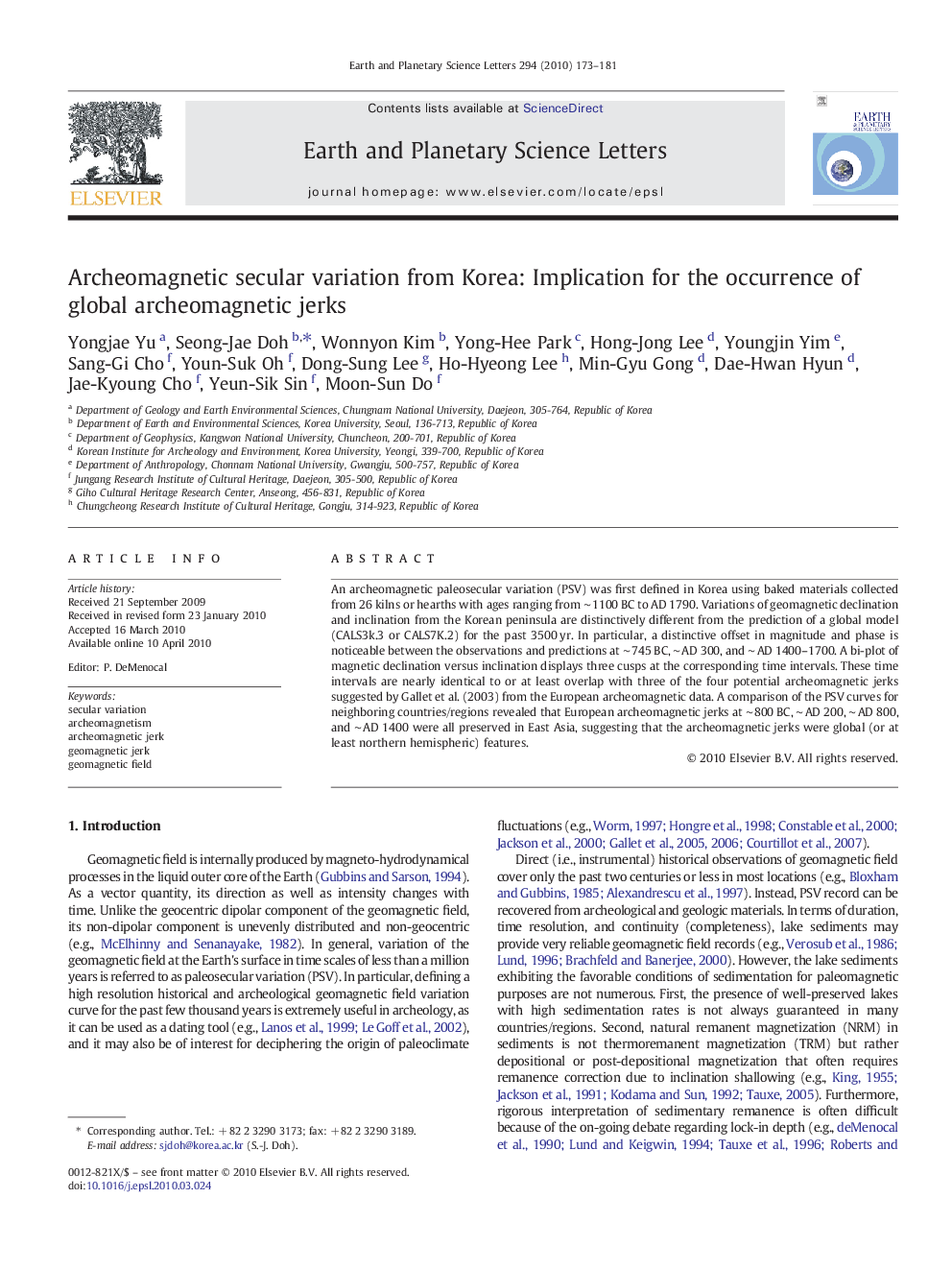| Article ID | Journal | Published Year | Pages | File Type |
|---|---|---|---|---|
| 4678673 | Earth and Planetary Science Letters | 2010 | 9 Pages |
An archeomagnetic paleosecular variation (PSV) was first defined in Korea using baked materials collected from 26 kilns or hearths with ages ranging from ∼ 1100 BC to AD 1790. Variations of geomagnetic declination and inclination from the Korean peninsula are distinctively different from the prediction of a global model (CALS3k.3 or CALS7K.2) for the past 3500 yr. In particular, a distinctive offset in magnitude and phase is noticeable between the observations and predictions at ∼ 745 BC, ∼ AD 300, and ∼ AD 1400–1700. A bi-plot of magnetic declination versus inclination displays three cusps at the corresponding time intervals. These time intervals are nearly identical to or at least overlap with three of the four potential archeomagnetic jerks suggested by Gallet et al. (2003) from the European archeomagnetic data. A comparison of the PSV curves for neighboring countries/regions revealed that European archeomagnetic jerks at ∼ 800 BC, ∼ AD 200, ∼ AD 800, and ∼ AD 1400 were all preserved in East Asia, suggesting that the archeomagnetic jerks were global (or at least northern hemispheric) features.
